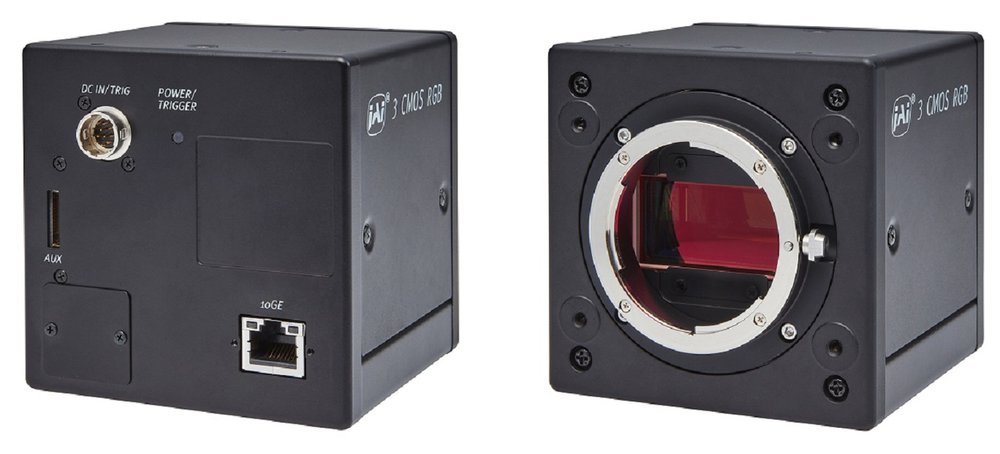World’s first 10GBASE-T GigE 3-CMOS colour line scan camera
The new Sweep SW-4000T-10GE camera from JAI combines 3-CMOS RGB prism line scan technology with a 10GBASE-T (10Gbit/s) interface for the first time for fast data transfer over distances up to 100 metres.

This unique camera not only offers extraordinary versatility through backwards compatibility to N-BASE-T and 1000BASE-T GigE standards, but is also the world’s fastest prism-based colour line scan camera.
The new camera incorporates 3 x CMOS sensors, each with 4096 pixel resolution, capturing red, green and blue light respectively. The 10GBASE-T interface provides RGB output at a maximum line rate as high as 97 kHz, while YUV colour data can be output at faster rates up to 145 kHz.
Built-in auto-negotiation technology provides automatic backwards compatibility to slower N-BASE-T (5 Gbit/s and 2.5 Gbit/s) and 1000BASE-T (1Gbit/s). This flexibility makes it suitable for a large range of industrial line scan applications from the slowest to the fastest speeds.
Applications include:
- Print and currency inspection
- 3D inspection of bottles, cans, or other cylindrical items
- Food and vegetable sorting/inspection
- Textile inspection
- Steel inspection
- Glass inspection
- Granular inspection
- Paper/foil inspection
- ITS (Road and railway inspection)
- Recycling
Prism-based 3-sensor cameras offer significant benefits compared to single sensor trilinear cameras. Precise sensor alignment provides exact R, G, B registration with no colour ‘halo’ effects. The resulting single optical axis ensures pixel to pixel accuracy and the same magnification for each sensor.
The precise registration avoids issues with objects moving at different speeds or rolling. In addition the camera can be positioned off-axis to the object without any problems associated with spatial alignment.
Ultra-high speed line scan inspection places great demands on light collection efficiency. In addition to the better light transmittance provided by prism-based cameras compared to trilinear cameras, the 4 line structure of each sensor opens up a variety of different binning combinations.
Each sensor has two lines with 7.5 x 7.5 µm pixels for fast responsivity and two lines with 7.5 x 10.5 µm pixels to provide better dynamic range and SNR characteristics. By using single line operation, vertical binning, horizontal binning or a combination of horizontal and vertical binning to give up to 8 different pixel size options, the camera can accommodate a wide range of inspection speeds and lighting situations.
Built-in colour space conversion to sRGB, Adobe RGB, HIS or CIE XYZ (the first step towards converting to any of the device independent CIE colour spaces) is provided. This simplifies application development and reduces host processing. Users can also program their own custom RGB conversions.
The JAI Sweep SW-4000T-10GE can be synchronized directly to the rotary encoders in a conveyor system to reduce the complexity of the total system. Four separate input lines plus built-in algorithms are provided to support a direct connection from up to two separate rotary encoders. Signals can also be daisy-chained from one camera to the next in multi-camera setups.
Precision Time Protocol (PTP) support in the camera ensures image capture at the same time when it is linked to other PTP-supported cameras. The synchronously acquired images share the same timestamp, making image analysis easier.
www.stemmer-imaging.com

